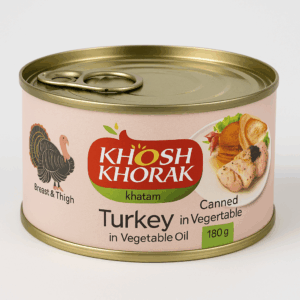
Top 10 Beer Importing Countries
Beer, one of humanity’s oldest beverages, remains a cornerstone of social culture and global trade. In 2023, the global beer import market exceeded $40 billion, underscoring the immense economic and cultural significance of this sector. The Top 10 Beer Importing Countries account for more than 70% of total imports, highlighting their crucial role in shaping global consumption patterns.
The beer industry has seen a seismic shift in recent years, driven by evolving consumer tastes and new market dynamics. The rise of craft beer, non-alcoholic beer, and premium brands has expanded the market’s appeal across demographic lines. In established beer-consuming nations such as the United States, Germany, and the United Kingdom, imports cater to growing demand for international brands and innovative styles. Meanwhile, emerging markets in Asia and the Middle East are fueling growth through increased urbanization, rising disposable incomes, and changing cultural perceptions of beer.
As the global landscape changes, beer exporters are targeting markets with high growth potential, leveraging platforms like uFoodin to expand their reach and navigate trade complexities. This article explores the Top 10 Beer Importing Countries, delving into key market trends, emerging opportunities, and the challenges faced by this dynamic sector.

1. United States
- Import Value: Over $8 billion (2023)
- Why It Stands Out: The U.S. leads beer imports globally, driven by demand for premium and craft beer brands from Europe and Mexico.
- Key Insights: Mexico is the largest supplier, followed by Belgium and the Netherlands, reflecting a preference for high-quality and diverse beer styles.
2. United Kingdom
- Import Value: Approximately $6.5 billion (2023)
- Why It Stands Out: The UK imports a variety of beers to cater to its vibrant pub culture and growing interest in international beer brands.
- Key Insights: Belgium, Germany, and the Netherlands dominate the supply chain, providing lagers, ales, and specialty beers.
3. China
- Import Value: Around $5.8 billion (2023)
- Why It Stands Out: China’s growing middle class and demand for premium imported beers drive its position as a top importer.
- Key Insights: Major suppliers include Germany, Belgium, and the Netherlands, focusing on high-quality and specialty options.
4. France
- Import Value: Over $4.5 billion (2023)
- Why It Stands Out: France’s imports reflect a growing interest in craft and premium beers, complementing its strong wine culture.
- Key Insights: Belgium, Germany, and the UK are key suppliers, offering a mix of traditional and innovative beer styles.
5. Italy
- Import Value: Approximately $4 billion (2023)
- Why It Stands Out: Italy imports a wide range of beers to cater to its expanding craft beer scene and food-pairing culture.
- Key Insights: Germany, Belgium, and the Netherlands dominate imports, focusing on premium and specialty beers.
6. Germany
- Import Value: Around $3.5 billion (2023)
- Why It Stands Out: Despite being a major producer, Germany imports specific beer styles to cater to niche markets and consumer preferences.
- Key Insights: Imports come primarily from Belgium and the Netherlands, focusing on craft and non-alcoholic options.
7. Canada
- Import Value: Over $3 billion (2023)
- Why It Stands Out: Canada’s multicultural population drives demand for diverse beer styles, including European and Mexican imports.
- Key Insights: Mexico, Belgium, and the U.S. are the primary suppliers, focusing on lagers and specialty beers.
8. Australia
- Import Value: Approximately $2.8 billion (2023)
- Why It Stands Out: Australia’s beer imports cater to its vibrant pub culture and growing interest in craft and premium beers.
- Key Insights: Imports come primarily from Germany, Belgium, and the UK.
9. Netherlands
- Import Value: Around $2.5 billion (2023)
- Why It Stands Out: The Netherlands serves as a key re-export hub, importing high-quality beers for distribution across Europe.
- Key Insights: Belgium and Germany dominate imports, focusing on premium and specialty options.
10. South Korea
- Import Value: Over $2.2 billion (2023)
- Why It Stands Out: South Korea’s demand for imported beers reflects its growing craft beer culture and premium beverage market.
- Key Insights: The U.S., Belgium, and Germany are major suppliers, providing diverse beer styles.
Key Trends in Beer Imports
- Rise of Craft and Premium Beers:
Consumers are seeking unique flavors and high-quality options, driving imports of craft and specialty beers. - Growth of Non-Alcoholic Beer:
Non-alcoholic and low-alcohol beers are gaining popularity, particularly in health-conscious markets. - Sustainability and Eco-Friendly Practices:
Importers are prioritizing suppliers with sustainable production methods and packaging. - E-Commerce and Digital Expansion:
Online platforms are facilitating the sale and import of niche beer brands globally. - Emerging Markets:
Countries like China and South Korea are driving demand for premium beer imports. - Cultural Fusion:
Globalization is introducing consumers to international beer styles, boosting demand for imports.

Major Challenges in Beer Imports
- Supply Chain Disruptions:
Rising freight costs and logistical delays impact the timely delivery of imported beers. - Regulatory Barriers:
Tariffs, import taxes, and labeling requirements vary by country, complicating trade. - Market Saturation:
Established beer markets face stiff competition, making it difficult for new entrants. - Shifting Consumer Preferences:
Rapid changes in trends, such as the rise of non-alcoholic options, require adaptability. - Sustainability Expectations:
Importers and producers face pressure to adopt eco-friendly practices and reduce carbon footprints. - Economic Uncertainty:
Inflation and economic instability can impact consumer spending on premium imports.
The Top 10 Beer Importing Countries reflect the diverse and evolving nature of the global beer market. From the U.S.’s demand for craft beers to China’s growing interest in premium imports, the opportunities for exporters are vast.
Platforms like uFoodin play a crucial role in connecting beer producers and importers, offering tools to navigate challenges, streamline logistics, and tap into emerging trends. With access to 210+ countries, uFoodin supports collaboration and transparency in the beer trade.
By leveraging uFoodin’s network, stakeholders can expand their reach, foster innovation, and contribute to the dynamic global beer market.
uFoodin Editorial Team
Bibliography
- Statista: Global Beer Import Trends
- FAO: Beer Trade Data
- Reuters: Challenges in Beer Supply Chains
- MarketWatch: Global Beer Market Insights
- Grand View Research: Beer Import Market Analysis
- Mordor Intelligence: Beer Trade Forecasts
























